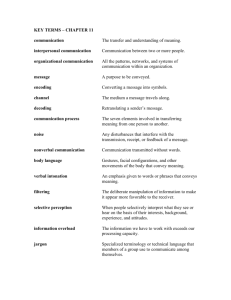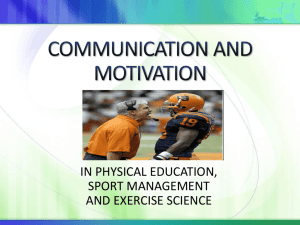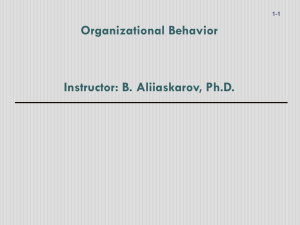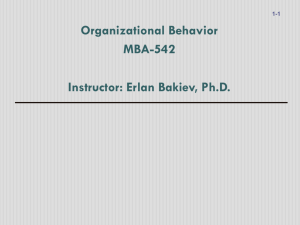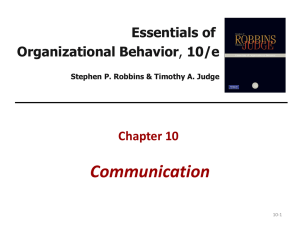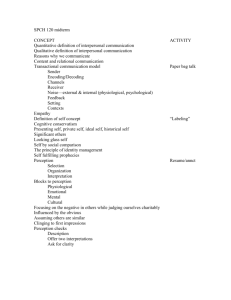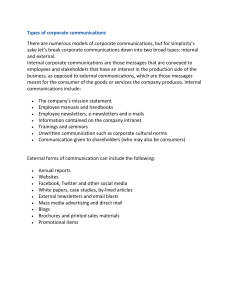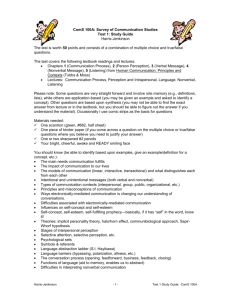Communicating in Organizations
advertisement
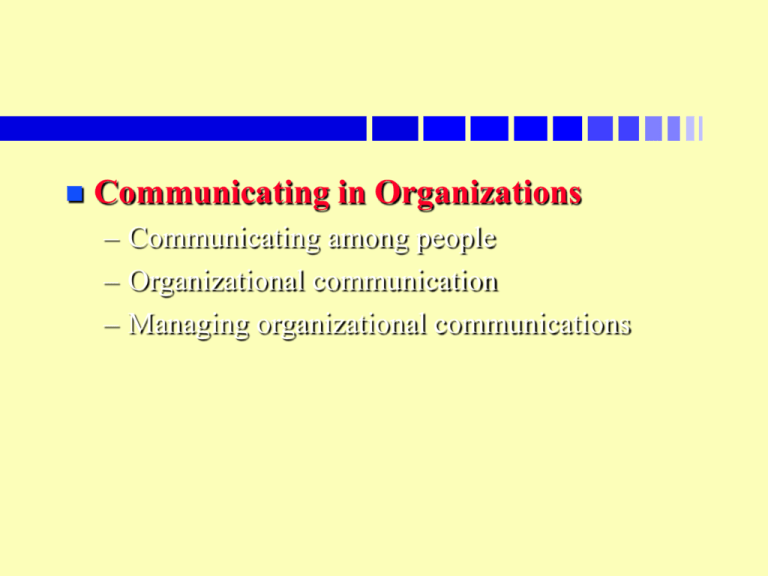
Communicating in Organizations – Communicating among people – Organizational communication – Managing organizational communications Communicating Among People Communication Perception and communication Communication channels Nonverbal communication Listening Perception and Communication Message is constructed from past events, experiences, expectations, and current motivations Receiver relies on his or her frame of reference for decoding and understanding message. Perception and Communication Perception = Process we use to make sense out of the environment Perceptual selectivity = objects and stimuli are screened and selected Perceptual organization = Categorizing stimuli according to our frame of reference – Stereotyping is the most common form of perceptual organization Communication Channels Channel richness is the amount of information that can be transmitted 1. Ability to handle multiple cues simultaneously 2. Ability to facilitate rapid, two-way feedback 3. Ability to establish a personal focus for the communication - Face-to-face communication is the richest medium - Standard computer reports are the lowest in richness. Channel Selection Nonroutine messages concern novel events and have great potential for misunderstanding--Use rich channels Routine messages convey information managers already agree on and understand--Can use channel low in richness. Nonverbal Communication Human actions and behaviors rather than through words Listening The skill of receiving messages accurately Requires attention, energy, and skill. Organizational Communication Formal Communication Channels = flow within the chain of command. Downward communication Upward communication Horizontal communication Informal communication channels Downward Communication 1. Implementation of goals, strategies, and objectives 2. Job instructions and rationale 3. Procedures and practices 4. Performance feedback 5. Indoctrination. Upward Communication 1. Problems and exceptions 2. Suggestions for improvement 3. Performance reports 4. Grievances and disputes 5. Financial and accounting information Horizontal Communication Exchange Across Peers or Co-Workers 1. Intradepartmental problem solving 2. Interdepartmental coordination 3. Staff advice to line departments. Informal Communication Channels Management by wandering around (MBWA) The Grapevine (informal, personal, unofficial) Managing Organizational Communications Barriers to communication Managing organization communications Barriers to Communication Interpersonal barriers which include problems with emotions and perceptions held by employees - Selecting the wrong channel for sending a message - Semantics - Sending inconsistent cues between verbal and nonverbal. Organizational Barriers Status and power differences between lower and higher levels Differences across departments of needs and goals The communication flow may not fit the group's or organization's task Formal channels may not be available for upward, downward, and horizontal communications. Overcoming Communication Barriers Individual Skills - Active listening - Select the appropriate channel for the message - Make a special effort to understand each other's perspective - Managers should practice MBWA. Overcoming Communication Barriers Organizational Actions - Create a climate of trust and openness - Develop and use formal information channels in all directions - Encourage the use of multiple channels including formal and informal communications - The organizational structure should fit communication needs.

